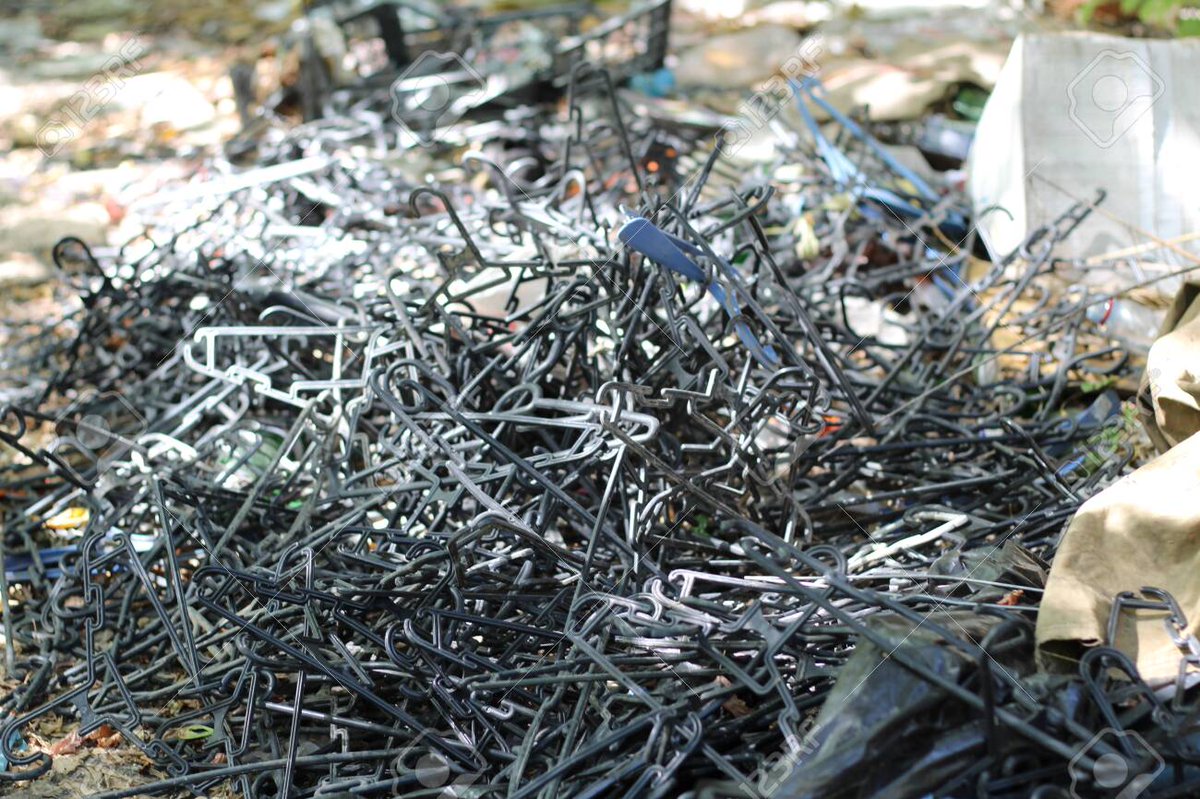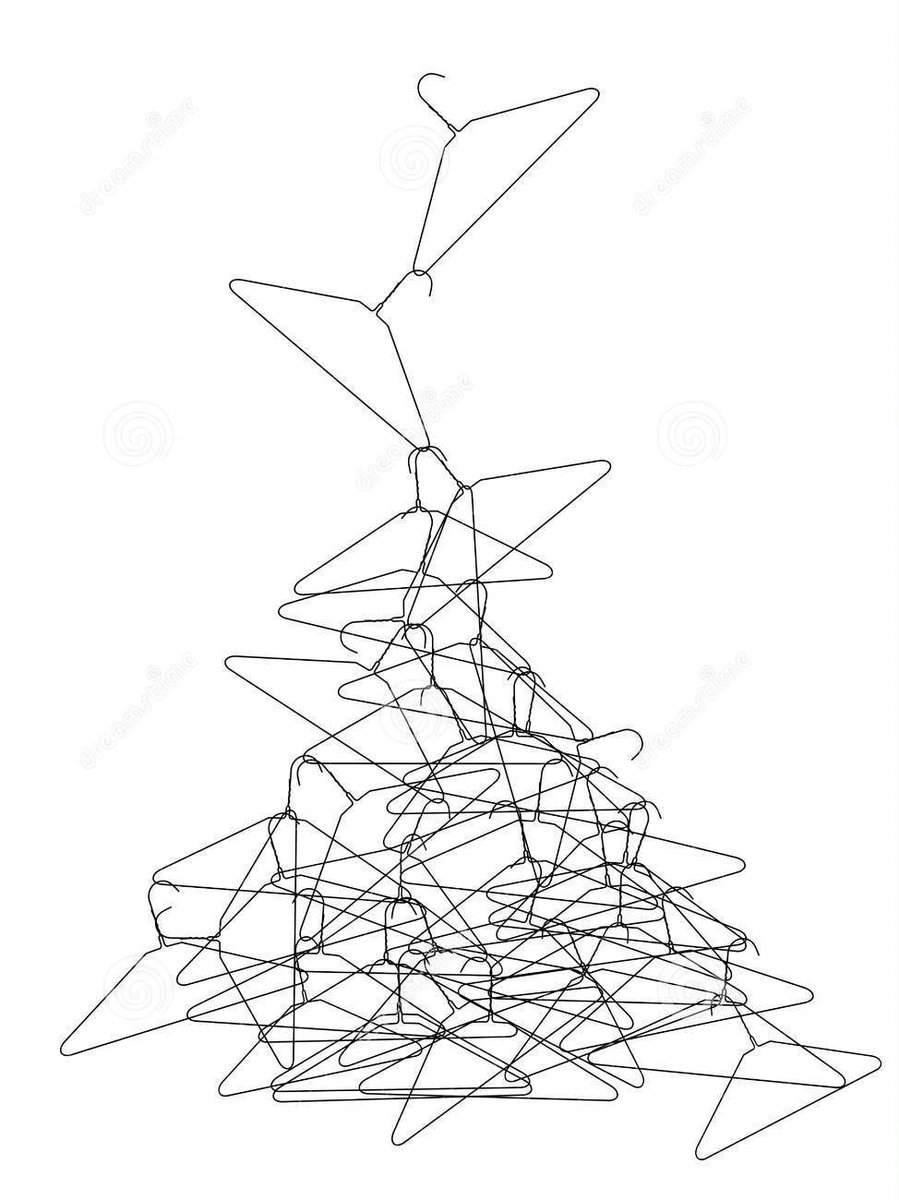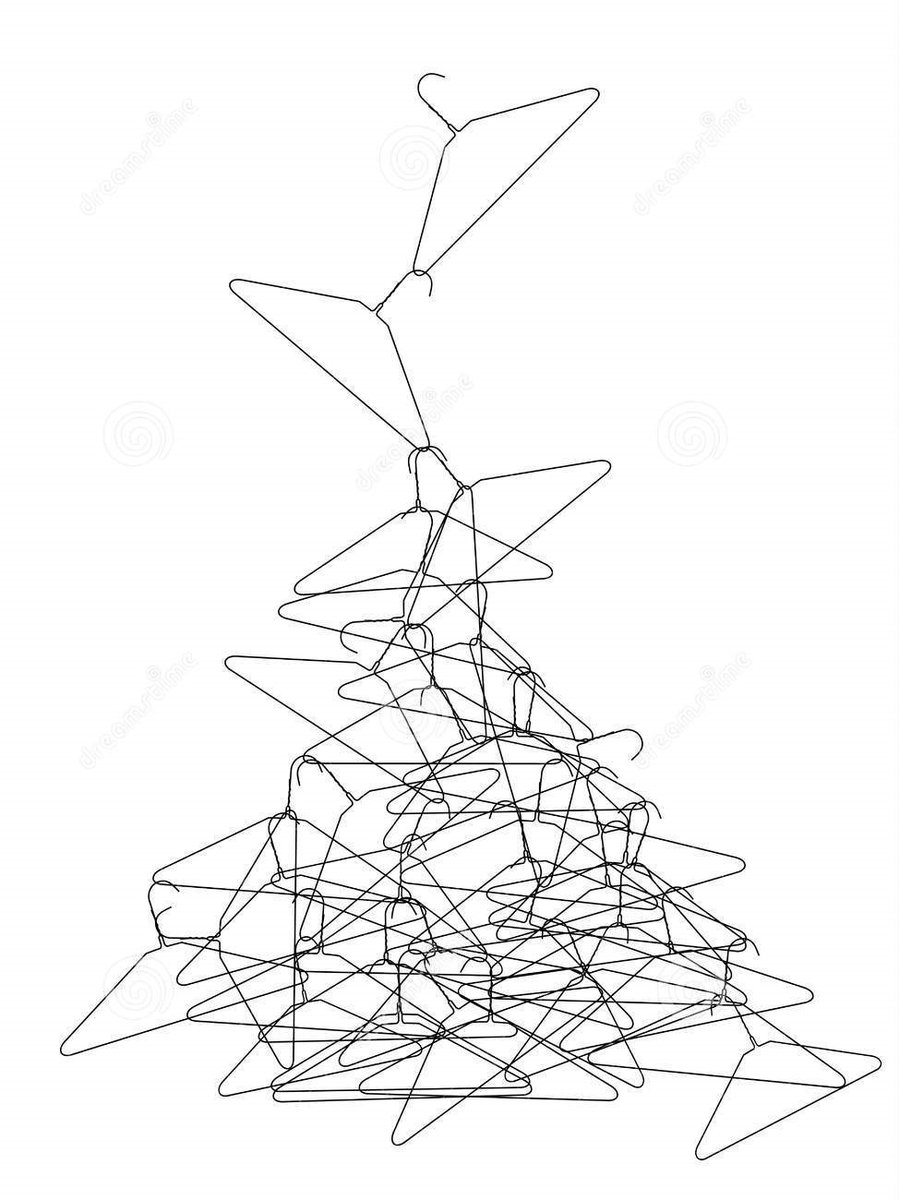Hanger metaphysics: an perspectival multi-scale model
Imagine that the universe is entirely made of tiny metal wire hangers. Piles and piles of hangers in knotted tangled lumps, covering a massive field (a hangar of hangers) stretching endlessly in all directions.
Imagine that the universe is entirely made of tiny metal wire hangers. Piles and piles of hangers in knotted tangled lumps, covering a massive field (a hangar of hangers) stretching endlessly in all directions.
The metal wire hangers are the constituents of the model, but they are not rigidly uniform shapes. The metal is malleable, and hangers can bend and twist around their neighbors. A lump in the pile of hangers could have an arbitrarily complex internal structure of hooks and links.
There& #39;s no god& #39;s eye view of these links. The only way to inspect the internal structure of the wires is to grab some hangers and pull them from the bulk.
This process of grabbing hangers, pulling from the bulk, and inspect the links is the basis for all knowledge in this world.
This process of grabbing hangers, pulling from the bulk, and inspect the links is the basis for all knowledge in this world.
The scientists in hanger-world (made of hangers but otherwise like you and me) use this grab and pull method to learn about their world.
Sometimes they& #39;ll grab loose hangers, but more often they& #39;ll grab a snarled knot of hangers that won& #39;t easily disentangle.
Sometimes they& #39;ll grab loose hangers, but more often they& #39;ll grab a snarled knot of hangers that won& #39;t easily disentangle.
And occasionally, if they& #39;re lucky or really clever about which hangers they grab, they& #39;ll pull out an elaborate, delicate, almost ornamental network of hangers– a chandelier– that provides deep insight into the internal structure of some tangled pile.
Step back from the tangles, and the field of hangers form a landscape of rolling hills and valleys, steep mountains and deep gorges. This landscape emerges from the linked, knotted structure of the hangers twisting around themselves.
Step back far enough, and these mountains and valleys in the hanger field can start to be (vaguely) identified with our familiar macroscale objects: the rocks and trees and planets and people that make up our everyday worlds.
I& #39;ll talk about dynamics shortly. But first:
I& #39;ll talk about dynamics shortly. But first:
The hanger model is non-reductive:
Although "everything is made of hangers", this isn& #39;t enough to explain the structures of the macro-landscape. A given hill has its structure not only in virtue of its parts, but also their arrangement: the pattern of twisted knots in the metal.
Although "everything is made of hangers", this isn& #39;t enough to explain the structures of the macro-landscape. A given hill has its structure not only in virtue of its parts, but also their arrangement: the pattern of twisted knots in the metal.
The hanger model is perspectival:
While the hangers have some structure, the only way to inspect that structure is to pull hangers from the bulk, which also changes that structure. In other words, what structure you find in a pile depends on where you grab and how you pull.
While the hangers have some structure, the only way to inspect that structure is to pull hangers from the bulk, which also changes that structure. In other words, what structure you find in a pile depends on where you grab and how you pull.
A sufficiently complicated pile might contain several interesting chandeliers arranged in delicate, overlapping hierarchies. Each of these structures are "in the pile of hangers" in some sense, but you might only notice them by pulling on the pile in a certain way.
Consider the sufficiently complicated pile of hangers that is my cat Alan, who is currently recovering from a ruptured abscess on his nose and is very unhappy and on a lot of cat drugs.
Alan is a cat made of fur and bones and organs and such, which in turn are made of biological molecules and so on. Hanger metaphysics thinks of these higher-order structures as chandeliers at different scales: vast collections of tiny knotted wire hangers arranged just so.
For instance, imagine a strand of mRNA in one of Alan& #39;s cells is one such chandelier, some structure of linked hangers within the larger pile. One of Alan& #39;s liver cells is another chandelier, one composed of (among other things) many copies of the mRNA chandelier.
Imagine that the neurocognitive structures responsible for Alan& #39;s learned feeding behavior exists as another chandelier, a delicate pattern of twisted wires whose structure is difficult to discern without knowing exactly how to look at it.
Of course, the neurocognitive chandelier and the liver cell chandelier have many labyrinthine connections between them, the structure of which might be difficult to tell from just pulling on one or the other part.
Apart from the grab and pull method of the hanger scientists who study the structure, the hanger metaphysics so described is entirely static.
Add to this picture two important dynamics.
Add to this picture two important dynamics.
First, the wires are effected by both gravity and electromagnetism. The weight of the piles of hangers contributes to the way the wires twist and bend around each other. The wires are also sensitive to magnets and can conduct electricity.
Second, the entire field of hangers is slowly warming up, corresponding to the increasing entropy of the system. The warming is uneven: some places are hot enough to melt the wires and dissolve the links, while other places are cool enough to pull at sturdy links with bare hands.
Dig deep enough under the surface of hangers and you& #39;ll eventually reach hot oceans of metal melted by the pressure. The flowing metal creates giant electric fields across the surface of the hanger piles, making the surface writhe and churn like tectonic plates or solar flares.

 Read on Twitter
Read on Twitter







